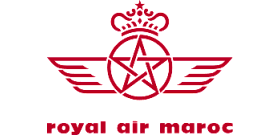 Royal Air Maroc Expands Russian Network with New Saint Petersburg Route
Royal Air Maroc Expands Russian Network with New Saint Petersburg Route
Royal Air Maroc has announced the launch of a new direct service between Casablanca and Saint Petersburg, scheduled to commence on 20 January 2026. This strategic move marks the Moroccan national carrier’s second destination in Russia, following the establishment of its route to Moscow, and signals a significant step in the airline’s ongoing international expansion.
The decision to connect Casablanca directly with Saint Petersburg is more than just an addition to Royal Air Maroc’s network; it is a reflection of the growing ties between Morocco and Russia. As both nations deepen their cooperation across trade, tourism, and cultural exchanges, this new route is poised to play a pivotal role in facilitating greater movement of people and commerce between North Africa and Eastern Europe.
For Africa’s aviation and tourism sectors, the opening of this route represents a valuable opportunity. The direct link will enable smoother access for business travelers, leisure tourists, and diaspora communities, reducing journey times and eliminating the need for lengthy layovers in major European hubs. Such convenience is expected to stimulate demand from both Moroccan and Russian travelers, as well as passengers from across West and Central Africa seeking efficient connections to Russia.
Royal Air Maroc’s expansion aligns with broader trends in the African aviation industry, where national and regional carriers are increasingly looking to diversify their international offerings and tap into new markets. By targeting Saint Petersburg—a city with a rich cultural heritage and strong economic profile—the Moroccan flag carrier demonstrates both ambition and adaptability in a highly competitive global environment.
This move also serves the interests of African travel professionals, who now have an expanded set of options to offer clients looking for connections to Russia and beyond. The route is expected to support not only point-to-point traffic but also onward journeys, leveraging Casablanca’s status as a major hub for connecting flights throughout Africa, the Middle East, and Europe. This could further position Casablanca as a gateway for travelers from sub-Saharan Africa seeking access to Russia and Eastern Europe.
From a commercial perspective, the timing of this launch is notable. As global travel continues its steady recovery, airlines are recalibrating their networks to respond to shifting patterns in demand and to capitalize on emerging opportunities. Royal Air Maroc’s decision to invest in the Russian market signals confidence in the resilience of international traffic between Africa and Eurasia, and a willingness to compete for a share of this dynamic segment.
The new direct service will also likely encourage greater cooperation between Moroccan and Russian tourism boards, travel operators, and hospitality providers. Joint marketing initiatives, cultural exchanges, and business partnerships will be crucial to ensuring the route’s long-term viability and appealing to a broad spectrum of travelers. Such collaboration could also pave the way for other African carriers to reconsider their own approach to Eastern European markets, where opportunities remain largely untapped.
As the January 2026 launch date approaches, all eyes will be on Royal Air Maroc’s operational strategy for the route, including flight frequencies, aircraft deployment, and service levels. The airline will need to balance competitive pricing with high standards of comfort and reliability to attract and retain passengers amid competition from both established and emerging players.
For the African travel sector, this development underscores the importance of agility, forward-thinking network planning, and a willingness to engage new markets. The Casablanca-Saint Petersburg connection is a compelling example of how African airlines can leverage strategic partnerships and geographical positioning to enhance their international reach. It also highlights the growing role that African carriers can play in shaping global connectivity patterns, especially as more travelers look for direct, efficient, and culturally enriching travel experiences.
Ultimately, Royal Air Maroc’s expansion into Saint Petersburg offers a blueprint for other African airlines considering similar ventures. By identifying routes that marry commercial potential with diplomatic and cultural significance, Africa’s aviation leaders can both drive their own growth and contribute to the continent’s broader integration into the global travel ecosystem.
